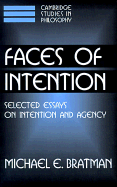Book contents
- Frontmatter
- Contents
- Acknowledgments
- 1 Introduction: Planning Agents in a Social World
- PART ONE ACCEPTANCE AND STABILITY
- PART TWO SHARED AGENCY
- 5 Shared Cooperative Activity
- 6 Shared Intention
- 7 Shared Intention and Mutual Obligation
- 8 I Intend That We J
- PART THREE RESPONSIBILITY AND IDENTIFICATION
- PART FOUR CRITICAL STUDIES
- Index
5 - Shared Cooperative Activity
Published online by Cambridge University Press: 18 December 2009
- Frontmatter
- Contents
- Acknowledgments
- 1 Introduction: Planning Agents in a Social World
- PART ONE ACCEPTANCE AND STABILITY
- PART TWO SHARED AGENCY
- 5 Shared Cooperative Activity
- 6 Shared Intention
- 7 Shared Intention and Mutual Obligation
- 8 I Intend That We J
- PART THREE RESPONSIBILITY AND IDENTIFICATION
- PART FOUR CRITICAL STUDIES
- Index
Summary
SHARED COOPERATIVE ACTIVITY: THREE FEATURES
We have a recognizable and important concept of a shared cooperative activity. This concept picks out a distinctive kind of interpersonal interaction, one that many of us see as important in our lives. You and I might sing a duet together, paint a house together, take a trip together, build something together, or run a give-and-go together in a basketball game. In many such cases ours will be a shared cooperative activity. Such shared cooperative activities can involve large numbers of participating agents and can take place within a complex institutional framework – consider the activities of a symphony orchestra following its conductor. But to keep things simple I will focus here on shared cooperative activities that involve only a pair of participating agents and are not the activities of complex institutions with structures of authority.
Shared cooperative activity (SCA) involves, of course, appropriate behaviors. If you and I successfully engage in the SCA of painting the house together then, of course, we paint the house together. But we might paint the house together without acting cooperatively. Perhaps neither of us even knows of the other's activities, or though we each know of the other's activities neither of us cares.
Given appropriate behaviors, what else is needed for ours to be a SCA? Suppose that you and I sing a duet together, and that this is a SCA. I will be trying to be responsive to your intentions and actions, knowing that you will be trying to be responsive to my intentions and actions.
- Type
- Chapter
- Information
- Faces of IntentionSelected Essays on Intention and Agency, pp. 93 - 108Publisher: Cambridge University PressPrint publication year: 1999
- 13
- Cited by



